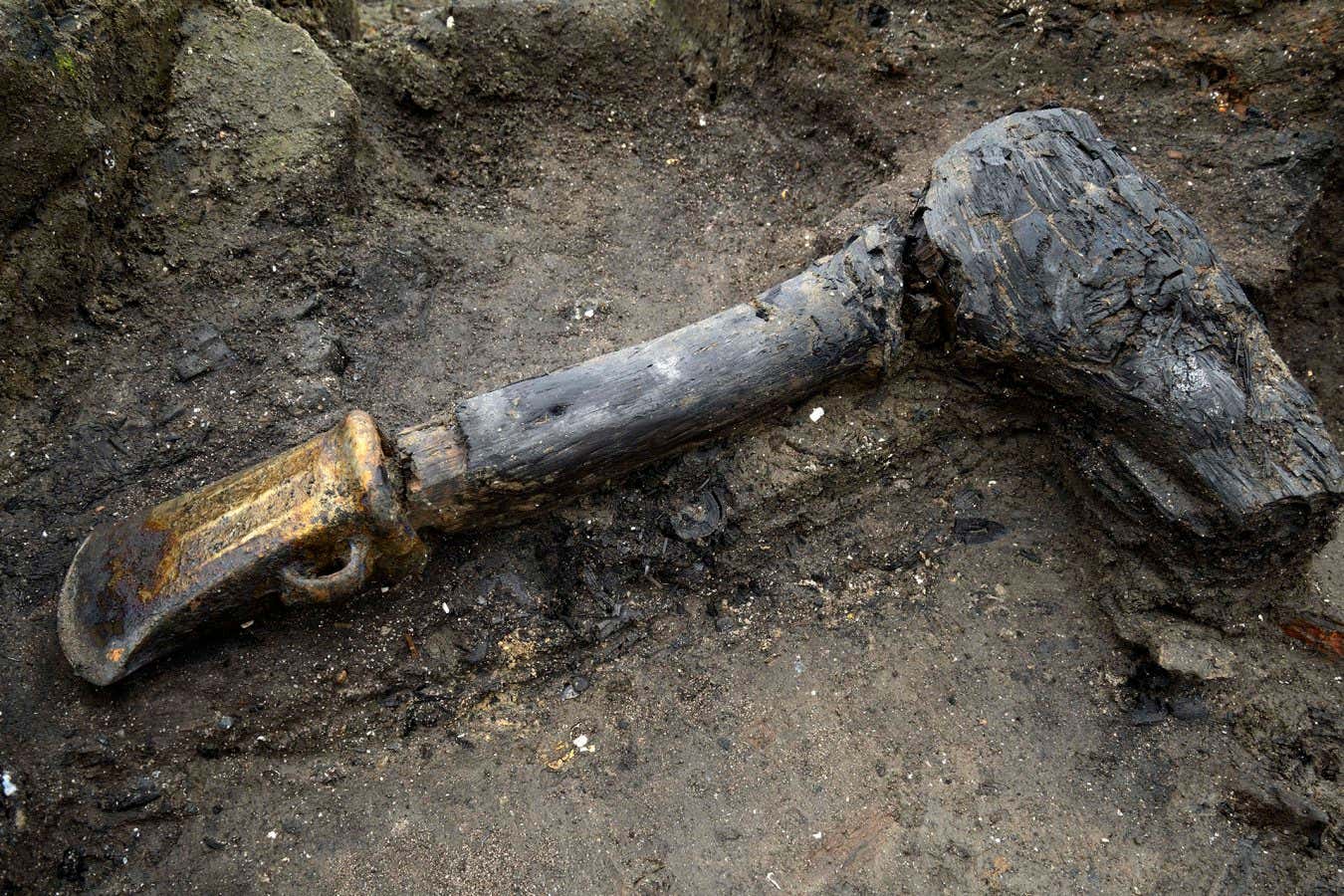The remains of a Bronze Age settlement in eastern England have been exquisitely preserved after being destroyed by a fire 3000 years ago. An examination of the site gives us an extraordinary snapshot of how Britons lived at the time, from what people may have eaten for breakfast to the tools they used to build houses.
Archaeologists first stumbled across ancient wooden posts at Must Farm quarry, near the small town of Whittlesey, in 1999. The small-scale investigations that followed sought to figure out whether there was anything interesting there, says at the University of York in the UK. But it wasn’t until 2015 that Wakefield and his colleagues conducted a full-scale excavation of the site.
The team uncovered the structural remains of four large roundhouses – circular dwellings usually made of wood with thatched conical roofs – dating back to between 3000 and 2800 years ago. Wooden stumps suggest these were built on stilts, connected by wooden walkways, over a small river that ran through the area. Based on the size of the channel, there may have been about 10 roundhouses at the settlement, says Wakefield.
Tree-ring analysis on wood from the structures suggests the settlement was destroyed a year after its construction, with the houses falling into the muddy water below. The waterlogged, oxygen-scarce environment prevented the settlement from degrading, , says Wakefield. Charring on the objects from the fire also provided a protective layer against environmental decay. “Pretty much everything that had been there in time of the fire inside these people’s houses has been preserved to find nearly 3000 years later,” says Wakefield.
The way items fell into the mud gave clues to the layout of each house. As you step through the door, the kitchen area tended to be in the east side of the house, with a sleeping area in the north-west and pens for livestock in the south-east.
Chemical analysis of kitchenware, including pots, bowls, cups and jars, suggests that the settlement’s porridge, cereals, honey and stews made with beef, mutton and fish.
“This is the best evidence we have on understanding prehistoric diet and cooking practices,” says at the University of Liverpool in the UK. “It’s the closest we’ll ever get to walking through the doorway of a roundhouse 3000 years ago and seeing what life was like inside.”
Toolboxes filled with axes, sickles and razors were a staple in every household. “One of the most beautiful objects that one of my colleagues found was an incredible two-part hafted axe,” says Wakefield. “What was so amazing about this particular design is that the axe head itself was inserted into an extra bit of wood that you could swap out.”
The recovered at the site have a lush, velvety feel – they were made of some of the finest textiles produced in Europe at that time, says Wakefield. Decorative beads, which may have been used in necklaces, were also found across the site, possibly coming from elsewhere in Europe or the Middle East.
The settlement has been likened to the ancient Roman town of Pompeii, which was entombed in ash after a volcanic eruption in AD 79. “Archaeologists sometimes talk of a Pompeii-like discovery – a moment frozen in time – and this is one of those, a burnt-down settlement that gives us an intimate view into people’s lives just before the fire and in the months running up to it around 2900 years ago,” says at University College London.
“Must Farm is more than a once-in-a-generation site. It is very likely that there will never be a site that tells us more about Bronze Age Britain,” says at Cardiff University, UK.
